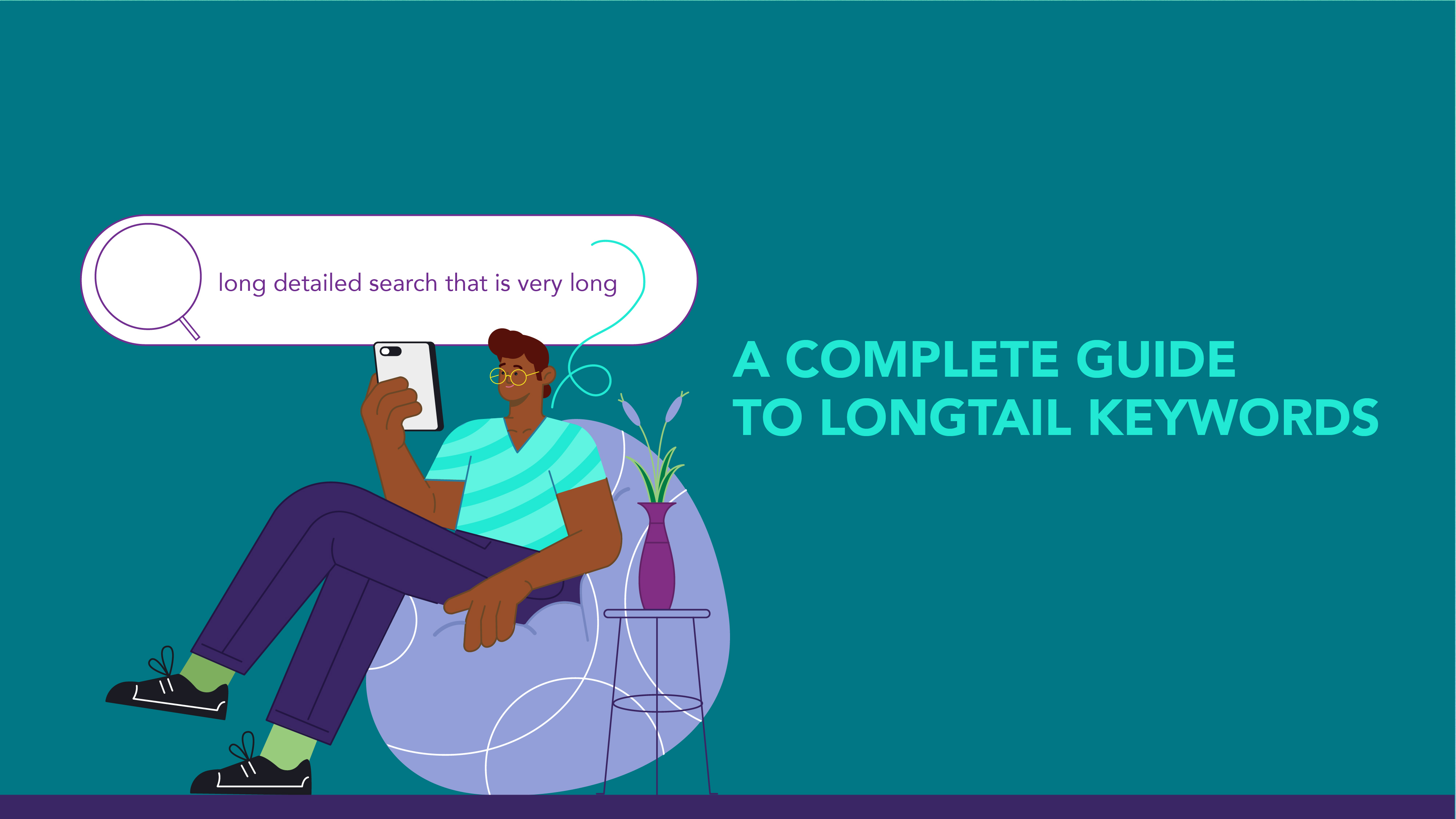By Nicai de Guzman on 27 Oct 2022

You often hear about keywords when it comes to SEO strategies. What keywords should be on your website? Can having the right keywords on your blog or product pages really lead to conversions or actions? But did you know that there are different types of keywords?
You might have also heard that long-tail keywords are easier to rank for because they have less competition and it captures the specific intent of the user in mind. But what exactly are long tail keywords?
Here’s a simple, introductory guide to long tail keywords and how you can use them in your site.
What are the different types of keywords?
There are three types of keywords, namely In-depth, Broad and Long Tail keywords. Let’s explore each of these types…
In-depth keywords explained
In-depth keywords are keywords which are searched for in greater volume than the broader keyword phrase. In-depth keywords usually contain more value or information. "Best laptop under $1000" would be an example of an in-depth keyword.
In-depth keywords are those that provide more information about a product or service. For example, "travel vacation package" is an in-depth keyword because it provides more details about the product: for example, how many days/nights it lasts, price range, etc.
In contrast, "coffee maker" is not an in-depth keyword because it only tells us what kind of coffee maker is being talked about.
So when choosing your keywords, think about what you want people to know before they buy your product. This will help you find the right keywords to use on your website.
Also note that not all keywords are created equal. In some cases, the term “in-depth” may actually mean “too much info” and could actually decrease the chances of people buying your product!
Broad keywords explained
Broad keywords are a catch-all term used to describe any word that is searched for by people. Although there are many different types of broad keywords, they can be broken down into two main categories: search volume and search intent. Search volume refers to how often a particular keyword is searched for on Google. Search intent refers to the purpose of the search. For example, a person who is looking for a specific product might use a broad keyword like "thermal printer" while someone looking for general information about printers might use a more targeted keyword like "laser printer."
There are several advantages to using broad keywords. First, they allow you to capitalise on the popularity of relevant searches, which can increase your chances of ranking well in organic search results. Second, because you're targeting an entire category of terms, broad keywords are more likely to attract more traffic from people looking for related products or services. Third, broad keywords may also provide you with some great leads and referrals as people who see your listing and click through may be interested in your business and want to learn more about it.
Long-tail keywords explained
Long tail keywords are phrases that are related to the primary keyword. They are often more specific and can help generate more traffic to a site. They are also the most difficult to rank for, but can be extremely powerful. Long tail keywords are phrases that are related to the primary keyword. They are often more specific and can help generate more traffic to a site.
The Benefits of Using Long Tail Keyword with SEO Strategies
Long tail keywords are keywords that have a high search volume but are not as popular as their counterpart, the head keyword. They are used to target specific audiences and to rank higher in searches.
These keywords typically have a lower competition and can be found by using tools such as Google Adwords Keyword Tool.
The benefits of using long tail keywords with SEO strategies include: increased organic traffic, increased conversion rates, increased ranking for specific topics or niches, and the ability to target specific audiences.
Different Strategies to Generating Ideas for And Finding Long Tail Keywords
The different strategies for generating ideas and finding long tail keywords are the following:
- Brainstorming sessions,
- Keyword research,
- Brainstorming tools.
But before you call a meeting and put your thinking caps, you must first understand what makes a good keyword. A good keyword is one that is relevant to the topic of your website and has a large potential for conversion. There are several factors to consider when choosing a good keyword, including search volume, competition, ease of use, and commercial value. The more search volume a keyword has, the more likely it is to be searched for by visitors to your site.
Another important factor is competition: the more competition a keyword has, the higher the chance it will be found by visitors to your site. This is because people tend to choose keywords that are in high demand by other marketers.
Another factor is ease of use: keywords with complicated spelling or grammar are less likely to be searched for than those with simple spelling and grammar.
Finally, commercial value refers to how much money a keyword can make you. For example, if you are selling products online, keywords that have high commercial value are likely to result in higher conversions.
If all of this looks like hard work and you want to get started with having the right long-tailed keywords that can generate leads and conversions for your site, feel free to drop us a message at [email protected] or check our our SEO services page to get an idea of what kinds of SEO we can do for you.


.png)
.png)







_2025.png)

